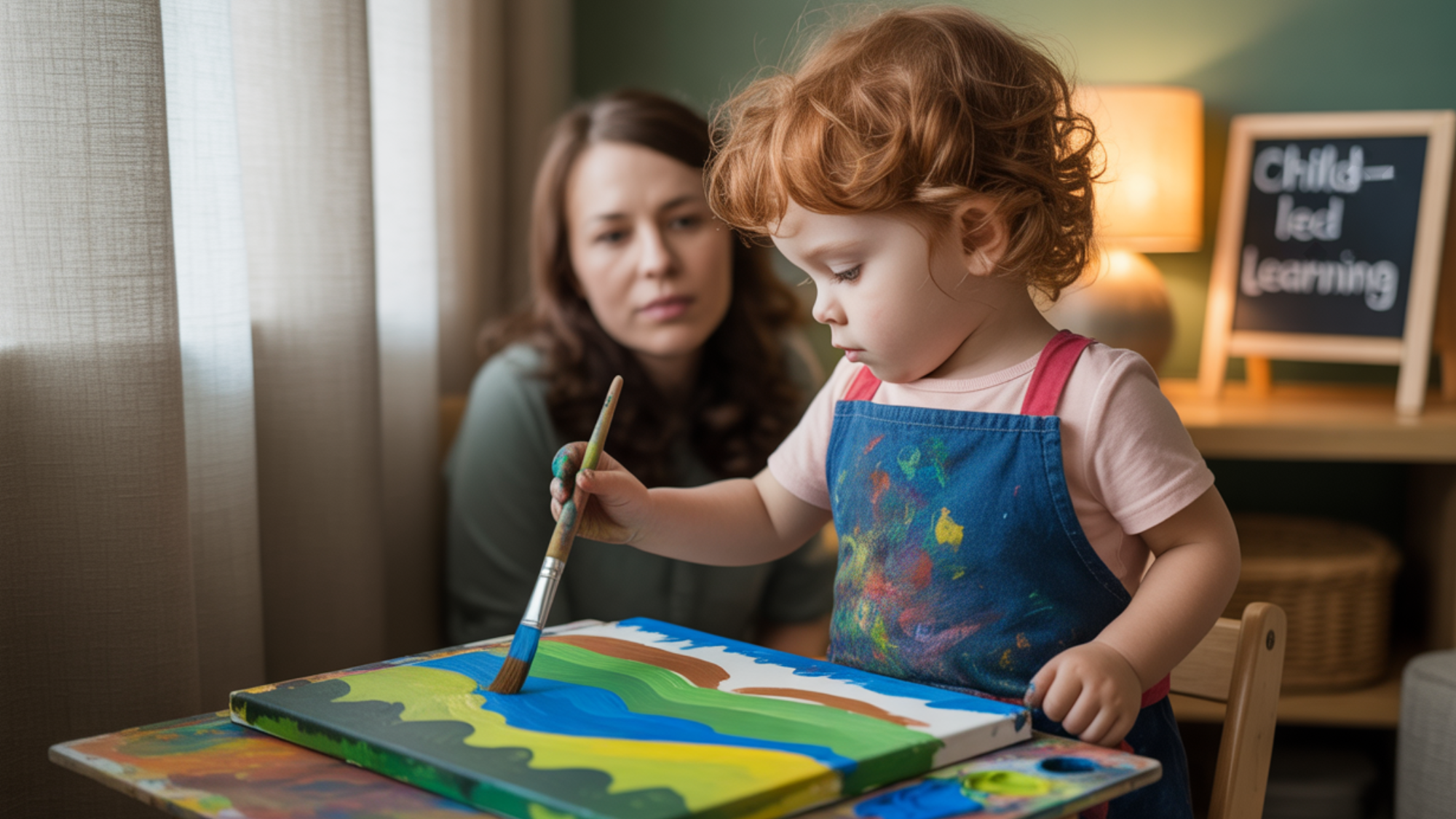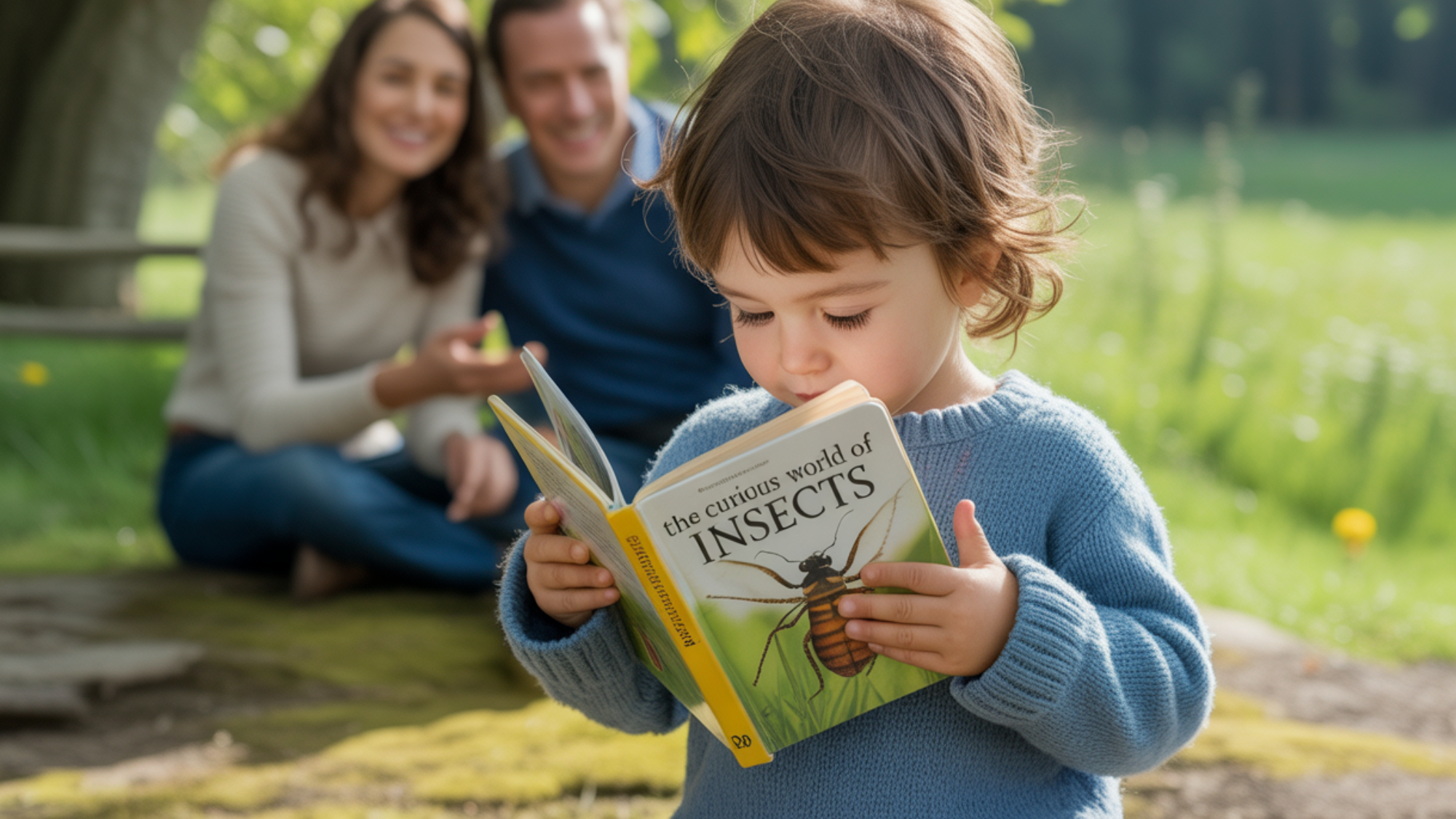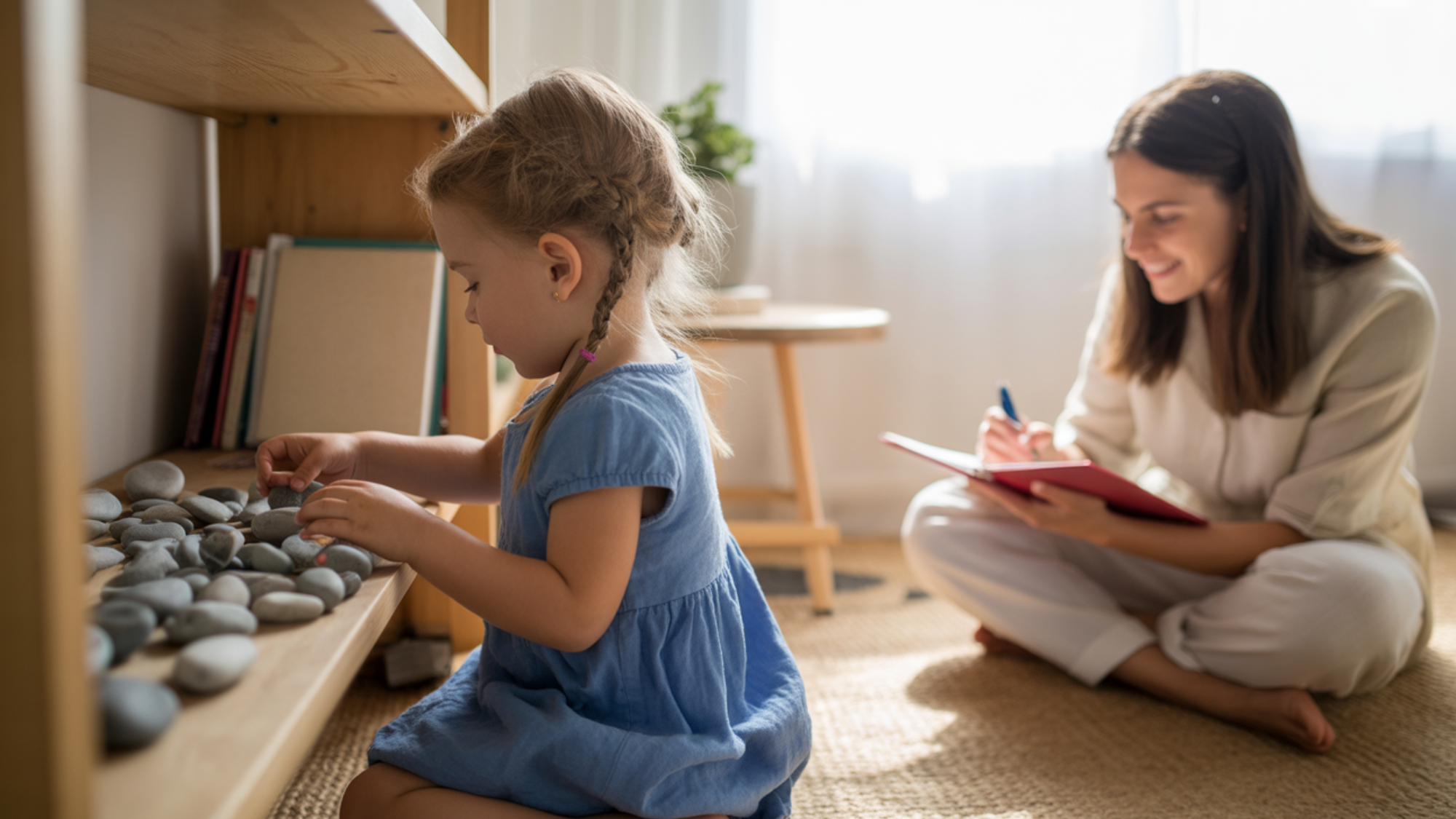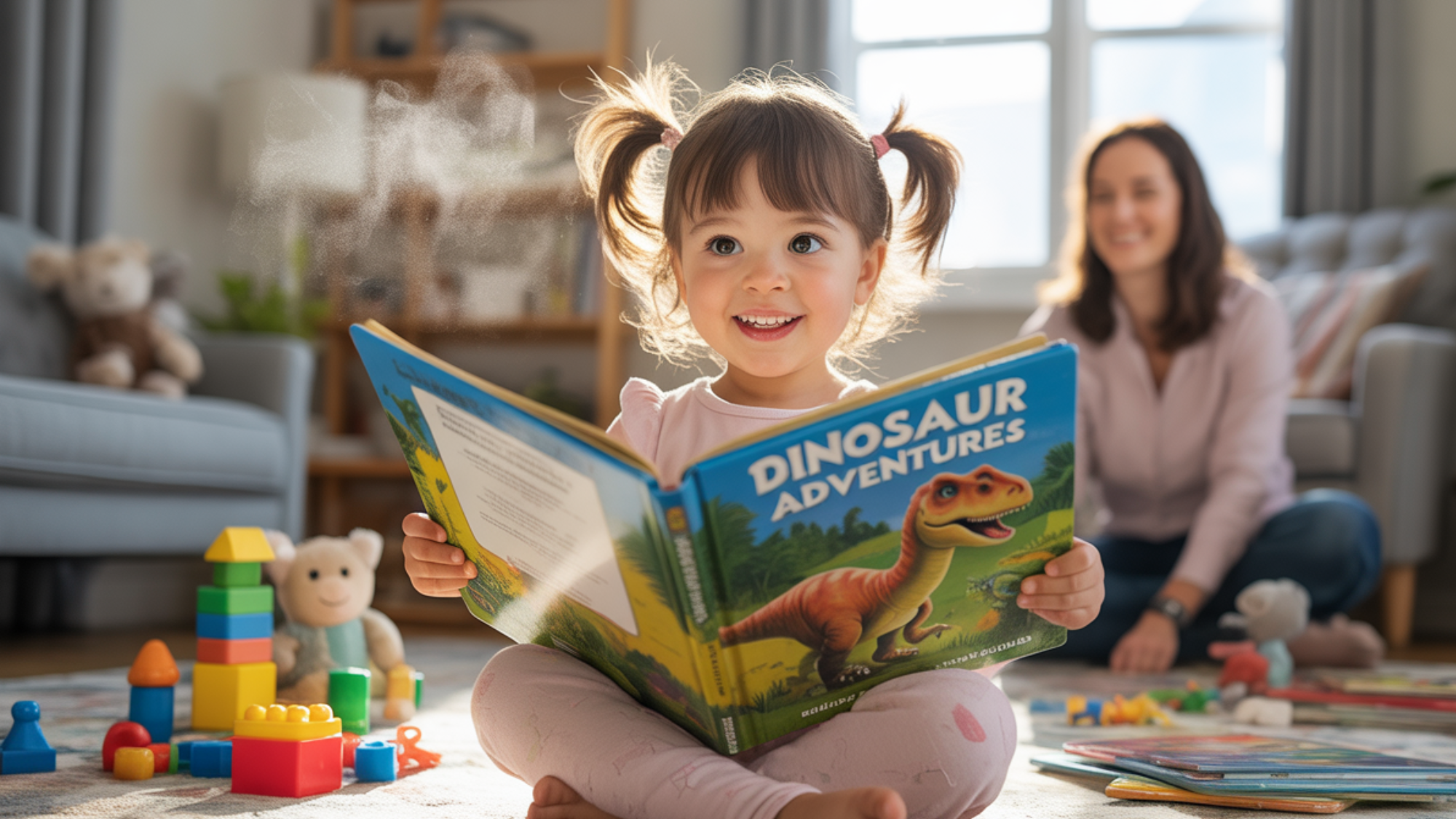A Guide to Child-Led Learning Techniques for Parents

Your 4-year-old just spent two hours sorting buttons by color and size – was that “just playing” or serious learning in disguise?
Children are born with natural curiosity that drives them to observe and learn about their world.
Yet many parents struggle with how to support this natural learning process without taking over or pushing too hard.
In this blog, you’ll learn what child-led learning truly means, why it benefits children of all ages, and practical steps to implement this approach in your home.
You’ll also get real-life examples, tips for common challenges, and helpful resources to support your family’s learning experience.
What is Child-Led Learning?
Parents who choose child-led learning often see remarkable changes in their children’s attitude toward education and personal growth.
Key benefits include:
- Builds lifelong love of learning – Children associate learning with joy and personal choice
- Develops confidence and independence – Kids learn to trust their instincts and make decisions
- Adapts to individual learning styles – Each child naturally chooses methods that work best for them
- Reduces learning stress – No pressure to keep up with arbitrary timelines or curricula
Intrinsic motivation, driven by personal interests, fosters a deeper understanding and retention than external pressure. Children develop decision-making skills, trust their instincts, and take ownership of their education.
By guiding their own learning, they select methods that align with their preferences, resulting in effective and enjoyable educational experiences.
Core Principles of Child-Led Learning

Child-led learning rests on several fundamental principles that guide how families approach education at home.
Interest-driven learning forms the foundation of this approach. Learning starts with what naturally captures your child’s attention, whether insects, building towers, or pretending to be a chef.
Adults serve as guides, not directors, in this process. Your role shifts from teacher to facilitator, asking open-ended questions like “What do you think will happen if…”
Open-ended play and inquiry encourage children to learn topics in multiple ways. Activities should spark questions rather than demand specific answers through blocks or art supplies.
Flexibility and responsiveness enable plans to adapt according to your child’s evolving interests and needs. Following natural progressions leads to deeper learning than rigid schedules.
How to Implement Child-Led Learning at Home

Starting child-led learning in your home doesn’t require expensive materials or complex planning. These four simple steps will help you create an environment that allows your child’s natural curiosity to flourish.
Step 1: Watch and Listen
The first step involves becoming a careful observer of your child’s daily activities.
Notice what they return to repeatedly, what makes them light up with excitement, and what questions they ask most often. Pay attention to how they play when left to their own devices.
Do they love sorting objects by color? Are they always building structures? Do they create elaborate stories with their toys? These observations reveal their natural learning preferences and interests.
Step 2: Prepare the Environment
Create spaces in your home that invite exploration and learning. This doesn’t mean buying expensive educational toys.
Instead, organize areas with open-ended materials like art supplies, building blocks, books, dress-up clothes, and natural objects like shells or rocks.
Make these materials easily accessible so your child can choose what appeals to them in the moment.
Step 3: Follow, Don’t Lead
When your child shows interest in something, resist the urge to take over or turn it into a formal lesson.
Instead, ask open-ended questions like “What do you notice about this?” or “What would happen if we tried this?” Your role is to extend their thinking, not direct it.
Provide additional materials or information when they ask, but let them maintain control of the learning process.
Step 4: Maintain Boundaries with Freedom
Child-led learning doesn’t mean complete chaos. Maintain structure around safety rules, daily routines like meals and bedtimes, and reasonable limits on screen time.
These boundaries actually help children feel secure enough to learn freely within safe parameters.
Strategies for Encouraging Interest Development
Don’t worry if your child seems content with routine activities or appears uninterested in new things – this is entirely normal, and there are simple ways to help their curiosity emerge.
| Strategy | How It Works | Example |
|---|---|---|
| Add Small Twists | Modify familiar activities slightly | If they love cars, add ramps from books |
| Offer Three Choices | Let them pick from multiple options | “Paint, blocks, or books today?” |
| Create Silent Invitations | Set up appealing material displays | Place puzzles on low tables, and art supplies in baskets |
| Allow Boredom | Give space for self-initiated play | Please step back and let them create their activities |
| Watch for Hidden Patterns | Notice subtle preferences | Observe what they touch, avoid, or how they move |
| Expose Gently | Introduce new experiences slowly | Nature walks, library visits, and simple experiments |
| Be Patient | Some children need processing time | Cautious kids often observe before participating |
Remember that every child develops interests at their own pace, and your role is to provide opportunities while waiting patiently for their natural curiosity to bloom.
Tips for Making Child-Led Learning Fun

Child-led learning naturally brings joy to education, but these practical tips will help you make the experience even more engaging for your family.
1. Turn Their Interests into Experiences
When your child shows an interest in something, expand it into a mini-adventure. If they love dinosaurs, consider creating a backyard fossil dig using buried toys or plan a visit to a local museum.
A child interested in cooking might enjoy planning and preparing a family meal, including simple dishes.
2. Use Everyday Life as a Learning Playground
Turn routine activities into learning opportunities. Cooking becomes math practice through measuring and counting. Grocery shopping teaches budgeting and reading.
Nature walks turn into science lessons about plants and animals. These moments offer rich learning without formal education.
3. Celebrate the Process, Not Just the Outcome
Focus your praise on effort and creativity rather than final results. Instead of saying “Great job making that tower,” try “I noticed how carefully you balanced each block.”
This approach encourages children to value learning and problem-solving over perfect outcomes.
4. Keep a Flexible Toolkit
Maintain open-ended materials like art supplies, building blocks, books, dress-up clothes, and magnifying glasses.
Having these readily available means you can quickly support your child’s spontaneous interests without special shopping trips or complex preparation.
Success Stories and Real-Life Examples
Real families share how child-led learning turned their daily routines and helped their children flourish in unexpected ways.
Emma, Age 3: The Kitchen Scientist
Emma became obsessed with mixing ingredients while her mom cooked. Her mother set up a small station with measuring cups, flour, water, and food coloring.
Emma spent hours creating “potions,” naturally learning about measurements, colors, and cause-and-effect while developing an early love for cooking.
Marcus, Age 6: The Map Maker
Marcus started drawing elaborate maps of imaginary places after a family road trip. His parents provided atlases, colored pencils, and poster board.
He created detailed worlds complete with cities and landmarks, naturally learning geography and developing fine motor skills through his passion.
Lily, Age 4: The Bug Detective
After finding a ladybug in the garden, Lily became fascinated with insects. Her parents bought magnifying glasses and identification books.
Lily spent mornings hunting for creatures and drawing what she found, learning about life cycles, habitats, and the importance of insects in nature.
Common Myths and Misunderstandings

Many parents have genuine concerns about child-led learning. Here’s what they worry about versus what happens in real families.
Parent Worry: “My child will never learn to read or do math without formal instruction.”
What Happens: Children encounter math and reading naturally through their interests. A child building with blocks learns geometry and counting.
A child asking, “What does this sign say?” during pretend play is ready for reading. Interest-driven learning often leads to skills above grade level.
Parent Worry: “Without structured lessons, my child will fall behind academically.”
What Happens: Children thrive with routine and boundaries, but formal lessons aren’t required.
Structure means regular meal times and bedtimes, not rigid curriculum schedules. Play-based learning is more effective at teaching concepts than worksheets.
Parent Worry: “They’ll miss crucial skills that other kids are learning in school.”
What Happens: Curious children naturally discover essential skills when they need them.
A dinosaur-loving child will learn to read dinosaur books, count figures, and research facts online. Their motivation comes from genuine interest, not external pressure.
Parent Worry: “All this looks like playing, not real education.”
What Happens: Play is how children learn best. Through play, they develop problem-solving skills, creativity, social abilities, and academic concepts.
What appears to be “just playing” is actually complex learning happening naturally.
The truth is, children’s natural curiosity leads them to exactly the skills they need when they’re ready to learn them.
Helpful Tools and Resources
Having the right resources makes child-led learning easier and more enjoyable for the whole family.
Recommended Books and Websites
- “The Power of Play” by David Elkind
- “How to Raise a Wild Child” by Scott Sampson
- PBS Parents website for age-appropriate activities
- Common Sense Media for educational content ideas
Simple Tracking Tools
- Create a basic interest journal using a notebook or photo album
- Take pictures of your child’s creations and projects
- Write down their questions and observations
- Note what captures their attention each week
- Make simple observation sheets for daily interests.
Easy Learning Project Ideas
- Animal lovers: habitat dioramas, nature journals
- Builders: cardboard construction, simple machines
- Artists: painting stations, clay modeling areas
- Little scientists: kitchen experiments, plant growing
Basic Supply Kit
- Art supplies (crayons, paper, paint, brushes)
- Building materials (blocks, cardboard, tape)
- Exploration tools (magnifying glasses, measuring cups)
- Books and dress-up clothes
- Open-ended craft materials
Having these tools ready means you can quickly support your child’s learning without stress or special shopping trips.
Conclusion
Child-led learning provides a refreshing approach that honors children’s curiosity and builds strong foundations for lifelong learning.
This method allows children to engage deeply in their interests, fostering confidence and a love for learning through their experiences.
This approach encourages curiosity safely. Trust the process and celebrate small moments of wonder when children learn freely.
The key lies in observing your child’s natural interests and providing gentle support.
Ready to try child-led learning? Observe your child’s interests for a week and share your experience below. What surprised you most about their natural learning style?






